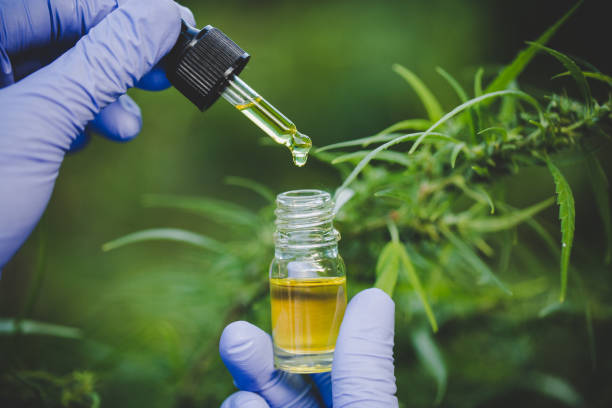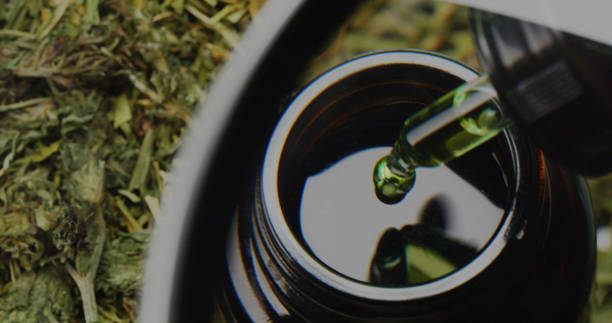Maximizing the Benefits of Tinctures: 4 Different Ways to Use Them
Tinctures are an incredibly useful and versatile natural remedy, with many potential health benefits. They can be used in a variety of ways to maximize the positive effects they have on your body. From adding them to food or beverages, to applying topically, there is no shortage of ways you can use tinctures for improved health and wellness. In this article we will explore four different methods that you can use to make sure you get the most out of your tincture routine.
Whether you're looking for relief from inflammation or want to improve digestion, tinctures may offer just what you need! Tinctures are made by infusing herbs into liquid such as alcohol or vinegar, creating a concentrated solution full of healing properties. The main advantage of using tinctures is that it allows you to take herbal remedies without having to go through the traditional preparation process - making them especially convenient when time is tight or you don't feel up for doing extra work.
With so many advantages, it's easy to see why more people are turning towards tinctures as part of their regular healthcare routines. However, if you really want to reap the maximum benefit from these powerful natural medicines then it’s important to know how best to use them – which is exactly what we'll look at next! Read on to discover four different ways that you can start incorporating tinctures into your life today and begin experiencing all their wonderful health benefits!

Definition
Tinctures are like an elixir of health - they can be used to treat a variety of ailments and promote overall wellness. This centuries-old practice has made a comeback in recent years due to its versatility and convenience, making it one of the most popular natural remedies for modern sufferers. In this article, we'll explore four unique ways to maximize the benefits of tinctures, as well as the types of tinctures available.
Tinctures are essentially concentrated liquid extracts from plants or herbs that have been soaked in either alcohol or vinegar over an extended period of time. They offer increased potency compared with dried herbal products such as capsules or teas, while also having a longer shelf life than fresh preparations. Additionally, they are free from any artificial colors or preservatives, meaning you get only pure plant medicine when using them.
The effects vary depending on which type of tincture is used; some may provide immediate relief while others work more slowly to build up their healing properties over time. However, all types share certain common benefits: they allow users to take precise doses quickly and easily, bypassing the digestive system so there's no need for pills or capsules. What's more, many tinctures contain multiple active ingredients that support each other synergistically for enhanced efficacy.
Using tinctures effectively begins with understanding how different forms affect your body differently and learning about the various types available on the market today. So let’s dive into what kinds of tinctures exist and how best to use them...
Types of Tinctures Available
Tinctures can be made from a variety of plants and herbs, each offering its own unique benefits. The most common types include those derived from cannabis, such as CBD oil tincture or THC tincture; herbal remedies like echinacea, valerian root, turmeric, and ginger; and homeopathic solutions including chamomile flower extract and licorice root. All of these have their own properties that allow users to customize the effects they're looking for.
When it comes to dosage amounts, it’s important to remember that everyone is different – what works for one person might not work for another. Generally speaking though, an average dose would typically range from 10-25 drops taken 2-3 times per day with food or water so that your body has time to absorb all the active ingredients. However, always consult a healthcare professional before taking any kind of supplement or natural remedy.
Finally, if you want maximum potency out of your tincture then proper preparation and storage are key factors in maintaining its freshness and effectiveness over time. Keep reading on to learn more about how best to prepare and store tinctures...
Preparation and Storage Guidelines
Preparing and storing tinctures correctly is essential for maintaining their potency and effectiveness. It’s like a fine wine – proper care makes all the difference when it comes to getting maximum results from your remedy of choice. To make sure you get the most out of your tincture, here are some tips on how best to store them:
First off, always remember that light, heat, and air can cause oxidation which will degrade any natural medicine over time. For this reason, it's important to keep your tinctures in an amber-colored glass bottle with a screw top lid away from direct sunlight or other sources of strong light. This ensures that they remain safe and effective until you’re ready to use them.
It’s also wise to double check the expiration date on each individual product before buying – though even if it has expired, there's still a chance that it may still be good depending on the type of tincture you have (e.g., herbal remedies versus homeopathic solutions). If in doubt however, don't risk taking anything past its indicated shelf life as this could lead to adverse reactions or ineffective results.
Finally, you should always shake well before using so that you get an even dose every time. Some products may require refrigeration for optimal storage up to two years after opening but just be aware that freezing temperatures can reduce the potency of certain active ingredients so take extra caution if doing this! With these preparation and storage guidelines in mind, now let's move onto exploring appropriate dosages...

Appropriate Dosages
When it comes to dosage, the best way is to start low and go slow. Everyone’s body is different so what works for one person may not work for another. It's important to pay attention to how your body responds when you first use a tincture – this will help you determine if you need to adjust the amount or frequency of usage as needed.
A general rule of thumb when starting out is that adults can take up to 1-2 droppers full (approximately 15-30 drops) three times per day with meals or as directed by a healthcare professional. Children should be given smaller doses according to their age and weight based on the manufacturer's directions. In cases where there are no specific instructions, it's usually safest to give half of what an adult would take in order to avoid any adverse reactions or overdosing.
It's also critical that you drink plenty of water throughout the day while taking tinctures since they act as diuretics which can cause dehydration if too much is taken without adequate hydration! With these appropriate dosages established, let’s explore some potential benefits of using tinctures...
Benefits of Using Tinctures
Tinctures are a great way to get the medicinal benefits of herbs without having to steep and consume them in tea. When taken orally, tinctures can be absorbed quickly into the bloodstream for fast-acting effects. They also have fewer side effects than other medications which makes them an appealing choice for those looking for natural remedies.
In addition to being easy to take, tinctures allow people to customize their dosages since they come in different concentrations. This means that users can adjust their intake according to personal needs or preferences while still getting the full range of therapeutic properties from the herb.
With appropriate dosing established and its various advantages considered, there are several ways to use tinctures depending on your individual needs and goals. Let's explore some methods of application...
Methods of Application
Using tinctures can be a powerful way to benefit from herbal remedies, but different applications will have varying effects. As with any form of medication, it is important to understand the proper methods for using and administering tinctures in order to maximize their potential benefits while minimizing risks and side effects.
One common method of application involves adding drops of the liquid extract directly into your mouth or under the tongue for rapid absorption. This may be especially useful if you need fast-acting relief from symptoms such as nausea or headaches. It's also great for those who don't like taking pills or capsules since there are no unpleasant tastes or smells associated with this method.
Another effective approach is mixing tinctures with food or beverages such as tea, coffee, smoothies, etc., which allows users to customize their dosage according to personal preferences. This convenient option gives people more control over how much they’re ingesting at one time without having to worry about measuring out exact amounts each time. Additionally, combining herbs with other foods helps them absorb better and increases their potency so that they work more effectively.
Finally, some people find topical application helpful when dealing with skin issues such as eczema or psoriasis. Tinctures can be used both internally and externally by mixing them up in lotions, creams, oils, salves - whatever works best for your needs! Applying these extracts directly onto affected areas provides localized relief while still delivering all the herbal properties found within the tincture itself. With so many options available, you're sure to find a method that fits your lifestyle and specific health goals!
Potential Risks and Side Effects
Though tinctures can offer numerous benefits, it’s important to be aware of potential risks and side effects. As with any herbal remedy, improper dosage or application may lead to an adverse reaction in some individuals. It is therefore essential that you seek medical advice before using a tincture if you are pregnant, breastfeeding, taking other medications, have existing health conditions, or are unsure about how the product might affect you.
Additionally, due to their potency, tinctures can cause interactions when taken alongside certain drugs such as blood thinners or antidepressants. Always consult your doctor before combining them with any medication so that they can monitor your progress and adjust dosages accordingly.
Finally, while most people don't experience negative reactions from using tinctures properly, those who do should discontinue use immediately and contact a healthcare professional for further guidance. With proper knowledge and care, however, these herbal extracts can provide safe relief from many different ailments without worry of harm.
Conclusion
Tinctures are an effective and natural way to gain the benefits of medicinal herbs. With a range of different types available, users can choose the one that best suits their needs. By following proper preparation, storage, and dosage guidelines, tincture users can maximize the potential health benefits these medicines provide without exposing themselves to unnecessary risks or side effects.
In addition to being easy to use and administer, research has shown that tinctures offer numerous healing properties for conditions ranging from anxiety and depression to inflammation and skin conditions. For example, studies have found that using tinctures made with St John’s Wort is as effective in treating mild-to-moderate depression as some antidepressant medications. This illustrates how powerful these herbal remedies can be when used correctly.
Overall, incorporating tinctures into your daily routine offers many advantages over other forms of medication due to its convenience and effectiveness at providing relief from various ailments. If you’re considering adding this form of medicine into your life, make sure you do your research first so you know what type will work best for your specific needs and always follow safety guidelines closely!
For more information, feel free to read this blog post from Helping Hands Cannabis.

